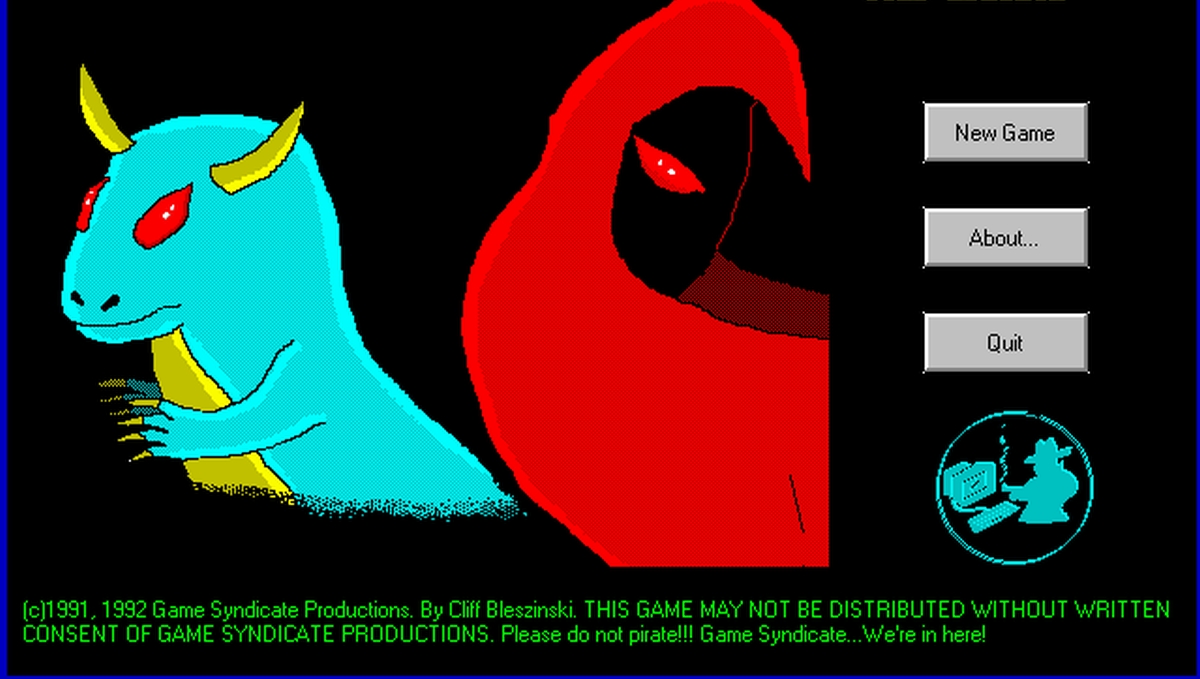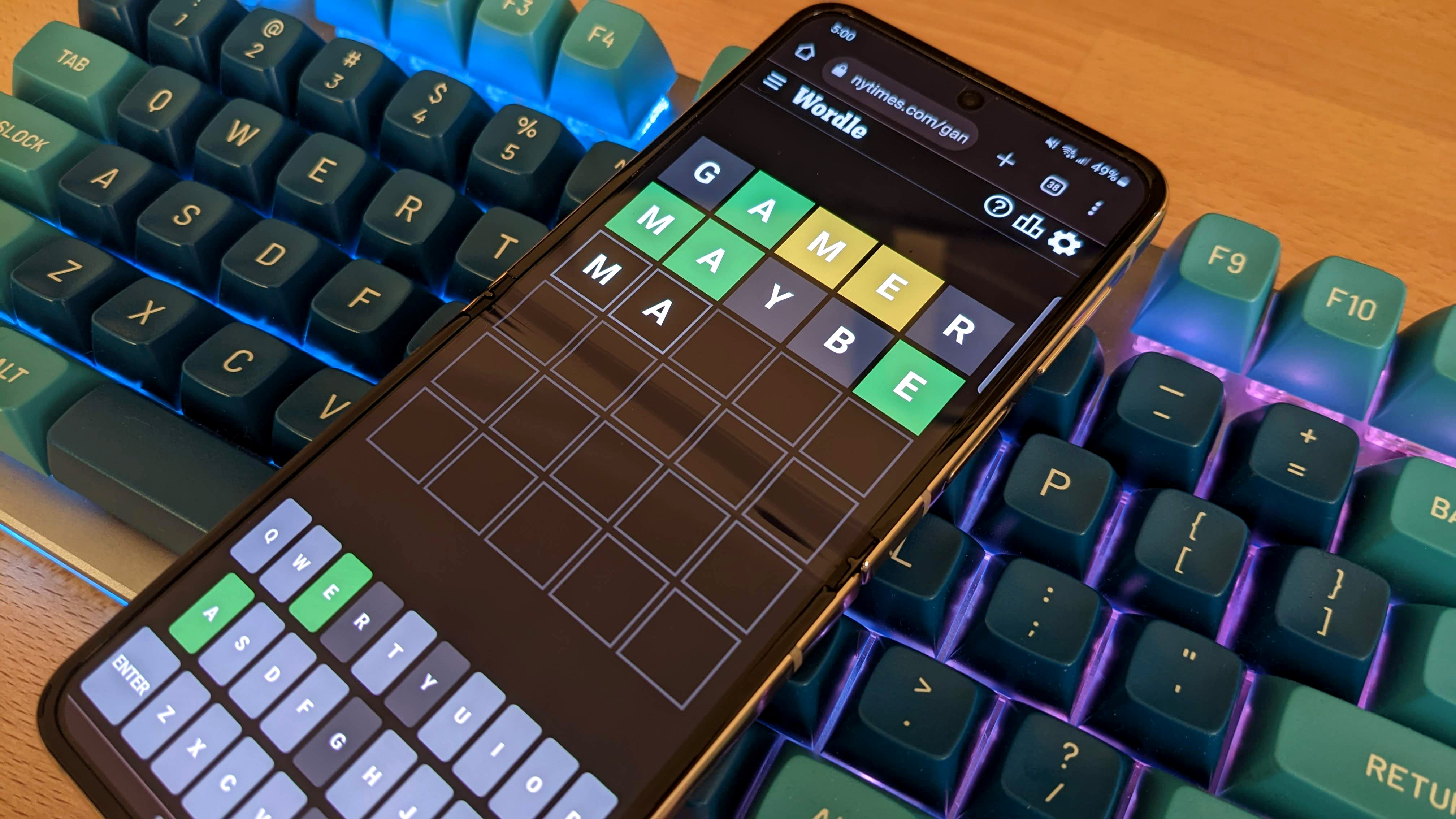
We're rerunning Richard Cobbett's classic Crapshoot column, in which he rolled the dice and took a chance on obscure games—both good and bad.
From 2010 to 2014 Richard Cobbett wrote Crapshoot, a column about rolling the dice to bring random games back into the light. This week, it’s time for a quick round of Before They Were Famous. What happened before Cliff Bleszinski’s the “overnight” success?
There’s almost never such thing as overnight success. Almost all success comes from much hard work, effort, a little bit of luck, and often previous, less-celebrated success. I’ve been working on death rays for years, yet still write a weekly column on obscure games rather than composing lists of demands to world leaders.
Meanwhile, game developers often start with, unsurprisingly, games. They may have the spark of genius right from the very start, or they may not, or they may be somewhere in the middle. When you dare to dream, you never know what might come next. Unless you’re talking about the game Dare to Dream, in which case it’s probably something really, really goofy. But we’ll get to that one soon enough. First, there’s a much more obscure adventure to check out.
Now, just to be clear, I’m not picking on CliffyB here or trying to poke at his early work in anything other than good fun. Nobody gets to make anything good until they’ve first made things that are, well, not so good. John Carmack started with a blatant rip-off of Ultima called Shadowforge, then spent years churning out platformers and less-than-great shooters like Hovertank 3D before id struck bronze with Commander Keen, silver with Wolfenstein 3D, and then a raspberry-ripple vein of gold and diamonds with Doom. George Broussard of Apogee infamously made the platformer Pharaoh’s Tomb, notable less for its pastiche of Indiana Jones than for Broussard managing to misspell his own name on the title screen.
Before there was Duke Nukem 3D, the manliest game in the world, there was Duke Nukem, the tale of a man in a pink shirt who just wanted to get home and watch Oprah. Yes, really. This was an actual thing that happened. And at one point, Peter Molyneux made games as well as empty promises. Though it was quite a long time ago, to be fair. Oh, and he also made one called Entrepreneur that he admits sold two copies, and one of those to his own mother.
But what of CliffyB’s old games? The one that’s usually held up is the aforementioned Dare to Dream, or digging a little deeper, a Shadowgate-style affair called The Palace of Deceit: Dragon’s Plight, written in high school.
Give me a Shock Rifle, and we’ll see how tough these guys are.
Dragon’s Plight was actually a sequel though – the version you can find online marked “2.1”. What of the original? Well, according to Archive.org, it was called The Secret of Castle Lockemoer, and yes, there’s a download. Unfortunately I can’t get it working on my PC, even after much futzing around with virtual machines. The mailing address seems right, and the shareware screen definitely asks for donations made out to Cliff Bleszinski, along with the cry “LONG LIVE SHAREWARE!”, but the actual game is just a blank screen. So, that’s a bit disappointing. The only part that does work, but probably shouldn’t, is the really odd message that pops up when you try to run it.
“This adventure was produced through many hours of toil and labor on the author’s part. He blew off his homework many a night to fix bugs and his grades suffered. He was severely beaten by his mother with a spatula repeatidly (sic). His spelling is now pitiful and he can only groan once for yes and twice for no. On top of it, the only girl he ever loved outside of his spatula wielding mother, the lovely Tammi Lynn Kent, decided to stay with her ugly boyfriend instead of going for this talented, handsome, hung, moderately built dude. He is emotionally crippled from this experience. He needs your donations to get back on his blistered feet and write games, fight off his mother, do homework, and somehow defy the odds and prevent his relocation to California and marry this pretty thing. Asta La Vistsa, Baybeeeee…
—The Roaring Slime (and DON’T call me Bufford!)”
So… uh… yeah. That would appear to be a thing that happened. Either that, or we’ve just found the most terrifyingly niche hoaxer on the entire internet. I wouldn’t want to rule anything out, really.
Before Epic Megagames, there was Game Syndicate. No relation to the game Syndicate.
Despite appearances, The Palace of Deceit: Dragon’s Plight is actually an important game in PC history. It’s the game that caught the attention of programmer Tim Sweeney at what was then Epic Megagames, caused Bleszinski to be brought on board, and so starting the path to games like Jazz Jackrabbit. And also something called Unreal. It’s pretty obscure. You’re unlikely to have heard of it.
So, what is it? It’s a point and click adventure that’s fairly obviously inspired by Shadowgate, with the copy that’s floating around the web officially version 2.1 Gold Edition, because even back in 1991, that stuff was happening. If you’ve played Dare to Dream, it’ll look pretty familiar—it’s a forerunner to the Unreal engine called simply the “Really?” engine, with its split windows, giant grey buttons and delightful cyan text that not only informs you the status box you are looking at is the StatusBox, but slaps a TM on the end to make absolutely sure. According to the Internet Archive (though not this copy that I can confirm), it also featured a plea for registration with the somewhat mixed message “not only will you get a great product and a company who stands behind it, you will help me to join a company like Sierra or Lucasfilm to make the greatest games ever someday.”
So, that worked out, as long as you like shooters more than adventures! This version does, however, include a reminder of much more innocent times, with a note saying that if you have any non-hint related issues to call a number and ask for “Cliff”. These days, you have to bother registering on Twitter to bug a developer.
The villain may be evil, but at least he follows proper safety procedure when kitting out his slaves.
But let’s look at the game—squinting, because the already tiny window is further shrunk by the odd decision to put all of the scenes into the pages of a book. There’s no animation or anything, but I suppose disk size might have demanded it. Also, you’ll notice the traditional Windows Blue Gradient in the background, which was far cooler than you might think after the fact.
It’s actually an unusual premise for an adventure: you’re a dragon. The wussiest, least intimidating, non-fire-breathingest dragon in videogame history, but still a dragon, trapped by a powerful wizard who was apparently beaten in the last game but without it managing to stick. This is the land of “Salac”, incidentally, which the manual clarifies is pronounced “SAY-LICK”, and the name of that evil wizard… is Garth.
Not the most intimidating name, but, lest we forget, the Unreal champion would eventually be called Malcolm. Garth’s abducted you, you being a blue dragon called Nightshade, with plans to torture the location of your people out of your head unless you can first escape and have a victory that would be much more satisfying if the manual wasn’t already talking about Garth getting up to more stuff in a third game that never happened.
So, um, we doing that torture thing? Anyone? Garth? Well, I’ll just let myself out then.
Garth isn’t a very good jailer, having put our dragon hero not only into a cell, but into a cell with a secret passage that even a dragon can squeeze through. That’s a pretty impressive oopsie even by evil overlord standards, and his first cell don’t show much dungeon-keeping experience. For starters, he only has one cell. “Used for special prisoners”, in much the same way that a fish and chip shop will sell a “special” haddock, apparently.
Elsewhere, there’s a portcullis blocking the exit, surrounded by four buttons: red, yellow, green, and blue. Press the wrong one and poison gas floods in for an instant game over. But, for some reason, the portcullis also opens, as if to give anyone with the ability to, y’know, hold their breath for a couple of seconds a chance to make it through. Also somewhat weird is that this is only technically a puzzle, as the previous room has the answer literally chiselled onto the wall.
Two questions. First, you learned this how? Second, why are you on this side of the lock you know how to open?
On the plus side, at least if you are going to die here, there’s more warning than in Shadowgate.
This death, deserved.
Unfortunately, what quickly becomes clear is that a better title than The Palace of Deceit would have been The Castle of Pixelbitching. This is a game whose idea of a clue is, if you’re lucky, making something a pixel thicker than it might otherwise have been, and if you’re unlucky, killing you dead.
Here for instance, see if you can spot the hidden lever that opens up a secret passage. I’ll give you a clue: YOU GODDAMN CAN’T!
It’s in the bottom left. And there’s no hint that there’s a door, except bloody-minded inevitability.
The most frustrating thing is that, as you continue exploring, rooms are full of what might be objects and might just be background decoration, to whatever degree MS Paint can decorate things. Two prominent boxes sitting on the floor, for instance. Several different wine racks, of which one has the inevitable secret button.
There’s never really much of a clue about what you’re meant to be doing, with even the occasional NPC not helping too much—admittedly because Nightshade keeps expecting prisoners and slaves of Garth to be able to tell him how to escape, and they’re all too busy not having the answer to be able to help. This isn’t too bad with the cheery mice who mine his diamonds and crystals, but is a bit weird when you can’t even free a talking lobster from his seafood prison.
Huh. That lobster’s generous with clues. I thought he was going to be shellfish.
Not a vast amount happens for the rest of the game, really. Nightshade lucks into, wait for it, THE SWORD, the magical weapon used to kill Garth during his last appearance, and due to being either a) strong of heart or b) strong as a goddamn dragon, has no trouble arming himself.
Then it’s simply a question of trekking through the castle to use it, past enemies like a giant spider, Garth’s champion knight, and when all else fails, the villain writing “GIVE UP” on the wall in blood. Someone’s blood. It doesn’t really matter whose. Though there is one surprise guest to look forward to meeting.
After some of these puzzles, this isn’t so much a cameo as a football. Punt!
And of course, the whole thing has a truly dignified finale.
Tolkien, eat your arse out.
It’s probably lucky that Tim Sweeney was impressed, because… wow. This is not an impressive game, from its Visual Basic coding to lore so detailed that it would take almost two tweets to fully encapsulate. It’s not surprising that it faded pretty fast from memory, and that’s not really a bad thing.
Good job no jerk would dig it up now for minor comic effect, huh?
This is what an epic megagame looks like. According to Epic Megagames.
But what followed was notably better. Which doesn’t mean good, but, y’know, was definitely better. This was Dare to Dream, a bit of a darling to shareware sections in the early ’90s, which used the same *cough* “engine” and really, really doesn’t look impressive now, but was at least a bit different back when it came out, before games like Sanitarium and I Have No Mouth and I Must Play the Kazoo.
Dare to Dream was set in the mind of a 10-year-old boy called Tyler, escaping into a dreamworld city that was actually pretty dark and moody by shareware standards, to face a villain called Christian who haunts his nightmares. It had a certain charm to it, though the puzzles quickly started making full use out of the dream setting to be “Whatever!” affairs or just plain odd. Like this description of Vaseline stolen from a mechanic:
“You ‘borrowed’ this industrial size jar of petrolium jelly from Bouf’s back room. He claimed it was for auto repair, but you wonder otherwise…”
The spin-off Dare to Wet Dream thankfully never happened. But where you might expect a dreamworld full of subtlety and hidden meaning, it was really just a load of random stuff with a side of nonsense, a few biblical elements, and the occasional quote or poorly drawn skull to scream horror, all smelted into a big golden hammer and used to smack the player around the head with the world “SYMBOLISM!” while not really symbolising anything in particular. Just, y’know, symbolic stuff.
Or shambolic stuff, like the scene where you use a pair of underpants to safely step in toxic waste and retrieve a shotgun, and this is a thing held up as a thing that makes sense and is a puzzle.
Leisure Suit Larry: The Wonder Years
Anyway, not very long story short, it ends with the shock reveal that Tyler is a little but nuts after the death of his father, his best friend Terry is actually his good self, and Christian his evil one, which you can tell because he has horns and a bowler hat. More important is the realisation that this makes his alternate selves names’ “Terry Christian”. Serious questions have to be answered here…
Of course, whether or not these games were good or bad really doesn’t matter. Either way, the career that follows speaks for itself. Everyone starts somewhere. Everyone hopes to improve.
Hitting the ground strolling really isn’t such a bad thing, as long as you build to a run, possibly holding a chainsaw gun. I’ve never played Gears of War, so I’m not entirely sure what the hell that is, but I like to imagine it’s a gun that actually shoots chainsaws as if they were bullets. Maybe it’s just because I grew up in the ’90s, but I’m fairly certain that, empirically and with reference to the great works of Keats, Tolstoy, and Wordsworth, that that is, like, totally the most awesome and badass thing ever, ever!
Except of course, for this. Because as we can all agree, nothing could possibly be more awesome and badass than this.







